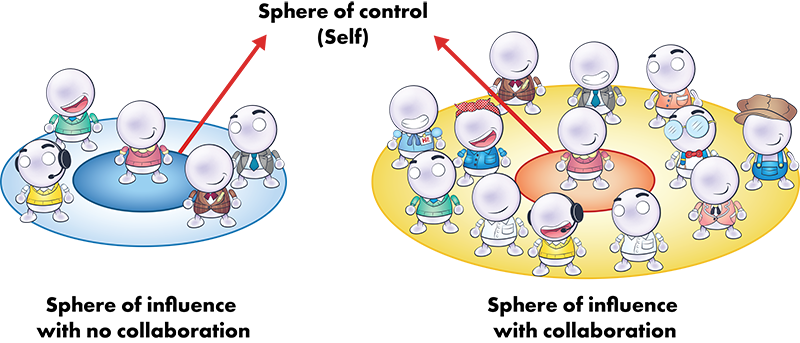Matrix Management Wiki
Home » The Accountability Key » 2D. The Principles of Matrix Management 2.0 Accountability
- 2D1. Accountability is the propeller that moves the organization towards its goals.
- 2D2. The MM 2.0 Accountability System is formulated from several key principles, driven by MM 2.0 paradigm premises, which results in a no-fault, commitment-based system focused on success rather than failure.
- 2D2i. Principle #1: There are multiple causes for every result.
- 2D2ia. A system is characterized by interdependence, and as a result, there are no singular root causes for an event, only a multiplicity of actions that create a symptom or result. Each of these individual causes may be so minor as to be insignificant, but when they are combined under certain circumstances, they create a unique result.
- 2D2ib. In a system, there is no one cause; there are multiple causes. Looking for a single cause in a system is counterproductive.
- 2D2ii. Principle #2: Upfront commitment drives success.
- 2D2iia. When people proactively choose what to commit to, they work hard to meet those commitments. However, when accountability is assigned rather than voluntarily accepted, there is little to no buy-in, and as a result outcomes are less likely to be achieved.
- 2D2iii. Principle #3: Fear shuts people down.
- 2D2iiia. Fear is usually a demotivator, particularly for knowledge workers. Since people are intrinsically motivated, we don’t need to force them to move forward; we just have to line them up with what they really want—success, recognition, meaningful work, positive experiences, etc.
- 2D2iv. Principle #4: People will not commit to something they think is impossible.
- 2D2iva. Accountability is a system that identifies commitments and whether or not someone has kept them. If accountability is to be commitment-based, then people must be able to decide if they can commit or not.
- 2D2ivb. People will not freely commit to something they think is impossible.
- 2D2v. Principle #5: Competition creates gaps; cooperation reduces them.
- 2D2va. Where competition creates gaps, cooperation reduces them, bringing the parties closer together and thus optimizing the whole.
- 2D2vb. The accountability system must foster cooperation.
- 2D2vi. Principle #6: Shared accountability creates cooperative behavior.
- 2D2via. Shared accountability unites people around a common goal and requires that they work together to achieve that goal. By sharing accountability, people cooperate for the greater good.
- 2D2vib. Methods used to make decisions, solve problems, and manage projects should be based on cooperation.
- 2D3. MM 2.0 accountability is focused on expanding an individual’s sphere of influence.
- 2D3i. The MM 2.0 Accountability System expands the individual’s sphere of influence because it promotes collaboration.
- 2D3ii. In VM 1.0, people are under the illusion that they can control other people and that having authority means having control over others. The MM 2.0 system recognizes that people cannot be controlled. The only thing an individual can control is himself.
- 2D3iii. Shared accountability expands an individual’s sphere of influence.
- 2D3iv. Using methods that encourage collaboration also expands a person’s sphere of influence. A broader sphere of influence allows an individual to fulfill a broader span of accountability.
- 2D3v. Figure 2.3. Sphere of control vs. sphere of influence.

- 2D4. MM 2.0 accountability principles/rules:
- 2D4i. Accountability is used to align leaders and professionals around common goals.
- 2D4ii. Having accountability for an outcome does not require authority.
- 2D4iii. Accountability is freely negotiated between any two people in the organization.
- 2D4iv. Every whole (system, sector, vector, segment, etc.) must be covered by at least one type of accountability.
- 2D4v. In most cases, accountability is a voluntary commitment.
- 2D4vi. Accountability is defined before work is executed.
- 2D4vii. Everyone in the organization has three types of accountability to fulfill: organizational, team, and individual.
- 2D4viii. Most goals and deliverables have both team and individual accountability attached to them.
- 2D4ix. One of the requirements of fulfilling accountability is building organizational relationships: within the team, outside the team, up, down, and sideways, etc.

